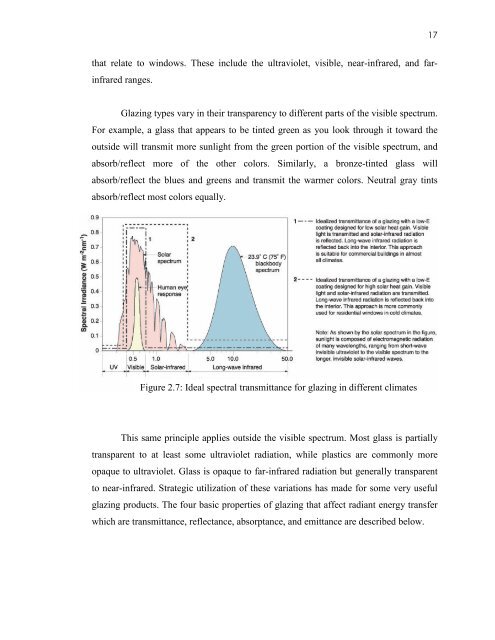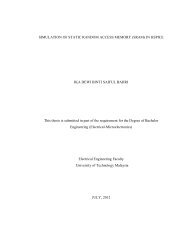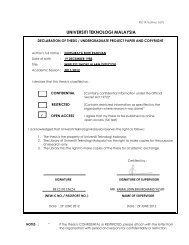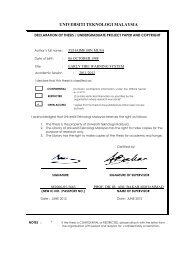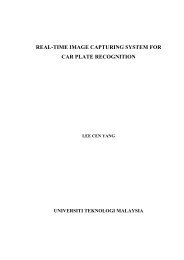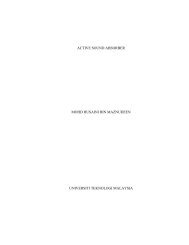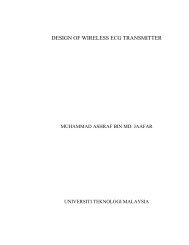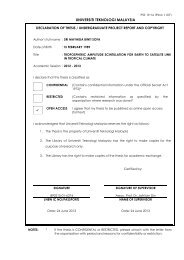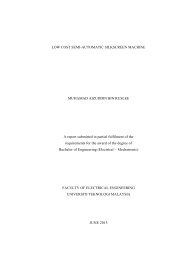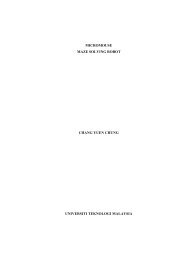borang pengesahan status tesis - Faculty of Electrical Engineering
borang pengesahan status tesis - Faculty of Electrical Engineering
borang pengesahan status tesis - Faculty of Electrical Engineering
You also want an ePaper? Increase the reach of your titles
YUMPU automatically turns print PDFs into web optimized ePapers that Google loves.
17<br />
that relate to windows. These include the ultraviolet, visible, near-infrared, and farinfrared<br />
ranges.<br />
Glazing types vary in their transparency to different parts <strong>of</strong> the visible spectrum.<br />
For example, a glass that appears to be tinted green as you look through it toward the<br />
outside will transmit more sunlight from the green portion <strong>of</strong> the visible spectrum, and<br />
absorb/reflect more <strong>of</strong> the other colors. Similarly, a bronze-tinted glass will<br />
absorb/reflect the blues and greens and transmit the warmer colors. Neutral gray tints<br />
absorb/reflect most colors equally.<br />
Figure 2.7: Ideal spectral transmittance for glazing in different climates<br />
This same principle applies outside the visible spectrum. Most glass is partially<br />
transparent to at least some ultraviolet radiation, while plastics are commonly more<br />
opaque to ultraviolet. Glass is opaque to far-infrared radiation but generally transparent<br />
to near-infrared. Strategic utilization <strong>of</strong> these variations has made for some very useful<br />
glazing products. The four basic properties <strong>of</strong> glazing that affect radiant energy transfer<br />
which are transmittance, reflectance, absorptance, and emittance are described below.


